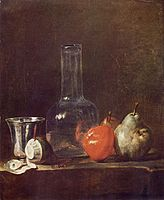Introduction
Art and design are two concepts that have been in existence for centuries (Watson 55). Art work was mostly inspired by the issues that revolved around the community in the ancient days. Most of these issues included, economics, politics, society, culture and aesthetics.
The forms of designs were object oriented, these were interiors, crafts, fashion, textiles and product design. The current designs have been inspired by ancient works. Many current artists have been influenced by the advancement that took place in the process of modernization, but there work have basis from the past.
Design in the current practice is being used for cultural and social studies. Artists in the 19th century did investigations on other possible ideas of artistic language like use of pictures and in particular the use of abstract forms in their work. In this, they explored the possibility of using materials and techniques that had never been manipulated before (Vlieghe 120).
This prompted them to use posters and pamphlets and developed alternative ways of exhibiting their art work. The exhibitions were done in theaters, cabarets and private galleries. A lot of changes have taken place in the world of art and many artists have also emulated some of the new procedures that have helped them work over the years to perfect their artwork.
Styles such as still life painting advanced from the use of pencils in the past to the use of colors in the present. The artist in the past believed that at some point in life their art work would come into life and be real but this could not happen since it was just a myth. Most objects that were famous in still life painting were food based such as fruits, vegetables and cutlery. People believed that a miracle would occur and the objects would attain life. Unfortunately, their belief did not come to reality.
People Who Contributed in Art Development
Gerard de Lairesse
Gerald was a Dutch artist. His main works were on flowers and Christianity. The still life paintings had a form of symbolism to Gerald and other people who viewed the paintings. The Dutch people did not welcome the idea of images depicting Christianity at first but later they agreed (Vlieghe 22).
The use of still life paints to represent Christian movements was appealing to the citizens of Netherlands especially the middle class. The other form of object that was used in still life was the flowers. Netherlands was one of the largest producers of variety of flowers. He ensured he painted different species of flowers for exhibitions.
The flowers were exported to various countries. The reason for the trade on flowers was because people had viewed the flowers in the paintings and had no choice but to buy. Still life paintings of these rich horticultural produce were very nice. Gerald’s work gave much advice on the use of brushwork, color, specimen, preparation, composition, perspective and harmony.

Figure.1. Shows a painting in the 17th century.
Vallayer Coster
Coster’s works were rich in depicting use of color which she presented in a very attractive form. Her works were due to manipulation of different colors in the hue circle. Coster’s decorations employed the use of bold decorative lines, color richness an illusionism. These were used on both artificial and natural objects.
Her paintings rated high in the business world; hence they were purchased at great numbers. Coster’s paintings stood out due to the use of attractive compositional objects and illusion representation. She later dropped the illusionism item to deal in floral paintings. Her late works employed the use of gouache and watercolor in oil paintings (Gesner 166).

Figure.2. Shows a painting in the 19th century.
Vincent van Gogh
During the 19th century still life painting had lost value due to the rise of studies in art. This resulted to the low rates of paintings in the hierarchy of genres. The new forms that were recognized were those that had a subject matter. Hence, the still life paintings were not recognized any more. But, this did not bring an end to the love of still life form of art. It only predisposed it to great advancement. The introduction of impressionable art work lead to the increase in the works on still life paintings.
The impressionists were majorly inspired by natural color schemes rather than parabolic expressions. They manipulated the placement of color on the hue; they were amazed by the impression caused by colors. They discovered that color, value, strength and harmony could bring out great artistic work in still life paintings.
Vincent included most of the items that he adored in his life in the paintings, for example, he included an inspirational book and a pipe in most of his paintings. His art work depicted a subject matter rather than allegorical matter. Most art works that were done afterwards included still life painting in conjunction with portrait paintings. These were mostly seen in the United States of America (Arnold 150).
Paul Cezanne
There was greater revolution in art and design especially in the 20th century. The forms of art that seemed more innovative were total abstraction, representational art work and still life paintings. The still life paintings works in the 20th century were advanced in terms of color fillings.
Paintings had much brighter colors with multi colored backgrounds. Fauvism components exhibited the use of abstraction and pure color. The use of line, form and color was also explored by most artists. This resulted to advancement in the world of art called Cubism (Arnold 105). This explored the use of colors to bring out three dimensional art works which were so real. It was a very big step in abstract forms.
Paul really made an advancement of the traditional works by Leonard da Vinci. His work gave way to modern art work that had its origin from photographic work. Abstract forms gained fame and every artist wanted to do his or her work using features of abstract painting, expressionism and fauvism.
This kind of art work was appreciated worldwide. It majorly started spreading from America to other parts of the world. New materials in sculpture work also contributed to the revolution in art work. These materials were glass fibers and resins. This art work was famously known as post-war art. There were also art works that had adopted geometrical aspects of math. This was mostly seen in architectural works.

Figure.3. Shows a painting in the 20th century.
Damien Hirst
The current art work is more advanced because of the dawn of the computer era. It explores the use of geometry in entirety. There is high usage of digital material in almost all current art works. This has been enabled by the development of soft ware’s that provide interfaces for use in art and graphic designs.
This has brought a new concept know as digital art (Arnold 105). More to this is the inclusion of audio, video and movements which make art more realistic than it has ever been seen before. It is easier to construct these art works just at the click of a button.

Figure.4. Shows a painting in the 21st century.
Conclusion
The current artistic works have highly revolutionized. The works are more advanced and beautiful. But, one fact cannot be ignored, that is, to appreciate the truth that ancient forms of art gave way to the current works. Although one may say that those ancient art works were not good, he or she would not be right in mind. This is because the Stone Age works have acted as a blue print for the current artistic works.
Works Cited
Arnold, Dana. Introduction to Art History. New York: Oxford University Press, 2004. Print.
Gesner, De. Classic Painting. New York: Hyperion Press, 1951. Print.
Vlieghe, Hans. Architecture and Flemish Art. New Heaven: Yale University Press, 1998. Print.
Watson, Robert. Back to Nature: The Green and Real in Late Renaissance. Pennsylvania: University of Pennsylvania Press, 2007. Print.